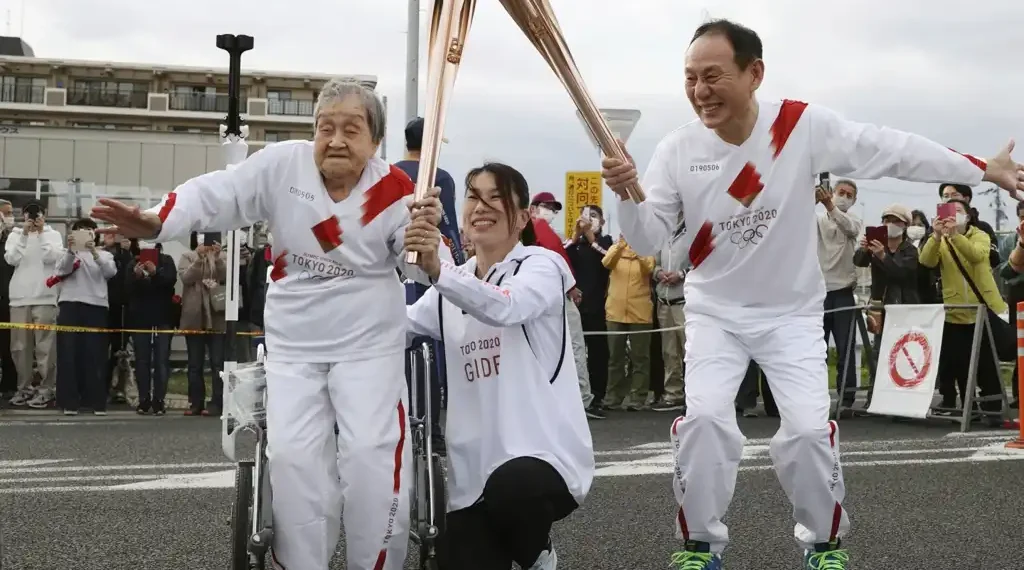Title: Japan’s Oldest Living Person Is a 114-Year-Old Doctor and Olympic Torchbearer
Subtitle: Shigeko Kagawa, a retired physician, becomes the nation’s oldest citizen after the passing of Miyoko Hiroyasu
Japan’s Oldest Living Person Is a 114-Year-Old Former Doctor Who Carried the Olympic Torch
Published: August 5, 2025, 14:00 (U.S. Eastern Time)
Shigeko Kagawa, a 114-year-old retired doctor from Nara Prefecture, has been officially recognized as Japan’s oldest living person following the recent passing of 114-year-old Miyoko Hiroyasu. Kagawa’s life journey, marked by medical service, wartime resilience, and a historic appearance in the Tokyo 2021 Olympic torch relay, reflects Japan’s reputation for exceptional longevity.
A Lifetime of Service: From Wartime Medicine to Community Healthcare
Shigeko Kagawa’s story spans over a century of Japanese history. Born in 1910, she graduated from medical school before the outbreak of World War II—a remarkable achievement for a woman in that era.
During the war, she served in a hospital in Osaka, providing medical care under challenging conditions. After the war, Kagawa took over her family’s clinic, where she practiced obstetrics and gynecology for several decades. She eventually retired at the age of 86, leaving behind a legacy of compassionate care and community service.
Her professional contributions made her not just a witness to history, but an active participant in it.
A Historic Torchbearer at Age 109
In 2021, at the age of 109, Kagawa captured international attention when she joined the Tokyo Olympic torch relay, becoming one of the oldest torchbearers in Olympic history.
Her participation symbolized not only the endurance of the human spirit but also Japan’s cultural reverence for its elders. The moment highlighted how senior citizens in Japan are often celebrated for their contributions and resilience, rather than sidelined due to age.
Longevity Without Extremes: A Balanced Routine
Despite her age, Kagawa is not following any extreme health regimen or fad diet. According to a recent interview with her family by MBS News, she attributes her long life to maintaining a simple but consistent daily routine.
She goes to bed and wakes up at regular times and eats three proper meals a day in small portions. Her family emphasized that she doesn’t do anything extraordinary—just lives with balance and discipline.
This reflects a broader trend seen among many of Japan’s centenarians, whose lifestyles often include modest diets, physical activity, strong social ties, and stable routines rather than any secret formula.
Remembering Miyoko Hiroyasu, Her Predecessor
Kagawa succeeds Miyoko Hiroyasu, who held the title of Japan’s oldest living person until her recent death at 114. Born in 1911, Hiroyasu studied art in Tokyo, later teaching in Hiroshima Prefecture. She was also a mother to three children.
Even in her later years, Hiroyasu maintained an intellectually active lifestyle. Living in a nursing home in Oita Prefecture, she regularly read newspapers, sketched, and enjoyed card games.
On her 113th birthday, she shared a simple message: “I am grateful to be healthy.” Her passing marked the end of a life well-lived and contributed to the nation’s deep respect for its elderly population.
Japan’s Aging Population Continues to Set Global Records
Japan is well known for having one of the highest life expectancies in the world. The country’s aging population continues to grow despite an overall population decline.
As of September 1, 2024, there were 36 million people aged 65 or older in Japan, accounting for 29% of the total population, according to Japan’s Ministry of Internal Affairs and Communications. This is the highest percentage of elderly citizens in any country globally.
Even more notably, 10% of Japan’s population is now aged 80 or older, and there are currently 95,119 centenarians—people aged 100 or more—living across the country.
These statistics point to a rapidly aging society that is reshaping national policies on healthcare, pensions, and social infrastructure. They also underscore the importance of community support and senior care systems that can accommodate this demographic shift.
The Global Significance of Japan’s Longevity Trends
Japan’s longevity statistics are often studied by researchers, healthcare experts, and policymakers worldwide. The nation’s centenarians are seen as models for healthy aging, and studies often point to a combination of factors contributing to their longevity:
- A diet rich in vegetables, fish, and fermented foods
- Universal healthcare access
- Strong community ties and family support
- A sense of purpose, even in later years
- Low levels of obesity and chronic disease
Shigeko Kagawa embodies many of these traits, yet her life also shows that simple habits—consistency, moderate eating, and staying active—can be powerful over time.
Celebrating a Life Still in Progress
While it is natural to reflect on Kagawa’s long life in historical terms, she remains an active and dignified presence in her community. Her participation in the Olympic torch relay and her decades-long medical service continue to inspire younger generations in Japan and beyond.
Her life is a reminder that aging can be not just about survival, but also about continued purpose and presence.
Conclusion: A Legacy of Longevity and Purpose
As Japan continues to redefine aging in the 21st century, individuals like Shigeko Kagawa stand as powerful symbols of what it means to live a long, meaningful life. Her story highlights not just biological endurance, but a life built on routine, service, and resilience.
In a country where more than 95,000 people are over 100 years old, Kagawa remains a standout figure—not only for her age, but for the remarkable way she has lived.
This article was rewritten by JournosNews.com based on verified reporting from trusted sources. The content has been independently reviewed, fact-checked, and edited for accuracy, neutrality, tone, and global readability in accordance with Google News and AdSense standards.
All opinions, quotes, or statements from contributors, experts, or sourced organizations do not necessarily reflect the views of JournosNews.com. JournosNews.com maintains full editorial independence from any external funders, sponsors, or organizations.
Stay informed with JournosNews.com — your trusted source for verified global reporting and in-depth analysis. Follow us on Google News, BlueSky, and X for real-time updates.












